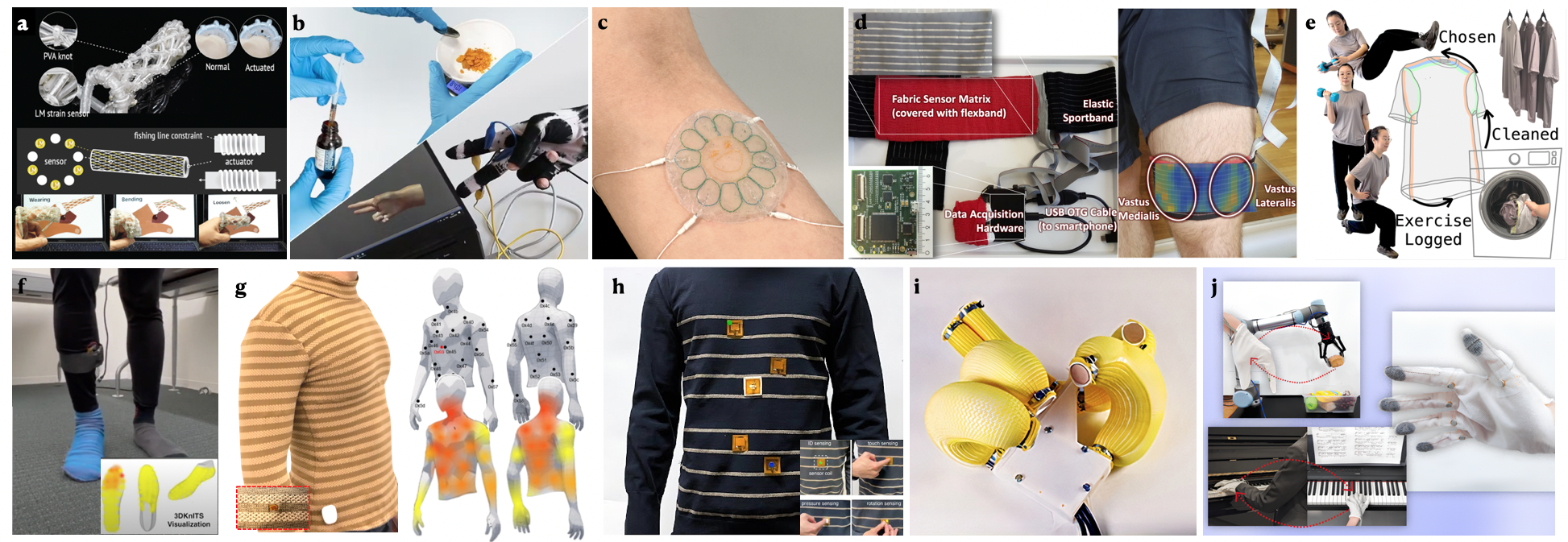Intelligent Soft Wearables
Bridging Disciplines Towards Soft Wearables for Everyone, Everywhere.
Join our workshop @ UbiComp 2025 in Espoo, Finland! The workshop will take place on October 13th 9:00-13:00, at Aalto University. Register now!
Workshop participation is open to everyone, as long as the venue space allows. We call for three kinds of contributions: interactive demos, experience/reflection reports, and Work in Progress (WiP)/position papers. Accepted demos/reports/papers are not required for attending the workshop.

Human bodies are almost always in contact with soft materials like clothing, for warmth, protection, self-expression, etc. Recent advancements in intelligent soft wearables have augmented these on-body soft objects with computational functions and intelligence with little compromise on the softness and comforts of wearables, allowing prolonged wear. These innovations, which combine advanced soft sensor design, fabrication, and computational power, offer unprecedented opportunities to improve our health, productivity, and overall well-being with monitoring and assistive capabilities. However, the inherent physical properties of soft materials present unique challenges in achieving practical interactions. The complexity of intelligent soft wearables, multiplexing intricate designs, soft materials, flexible electronics, advanced signal processing algorithms, and machine learning models, necessitates collaborative efforts from experts across diverse domains. This workshop aims to bring together interested researchers and practitioners across relevant domains to discuss the challenges and opportunities of intelligent soft wearables.
Important Dates:
-
6/26/257/3/25 AoE: Submission Deadline - 7/17/25 AoE: Decision Notification
- 7/24/25 AoE: Deadline for Camera-Ready Versions to be Included in ACM DL
- 10/13/25: Day of the Workshop
If you have any questions, please contact ty274[at]cornell[dot]edu.
news
| Jun 21, 2025 | Submission deadline extended to 7/3/25. |
|---|---|
| May 14, 2025 | PCS submission opens. |
| May 05, 2025 | UbiComp Workshop CFP released! Looking forward to your submissions! |
| Apr 26, 2025 | UbiComp Workshop Accepted! |
| Oct 13, 2024 | Successful UIST workshop hosted! We had a full room discussing democratizing intelligent soft wearables. |